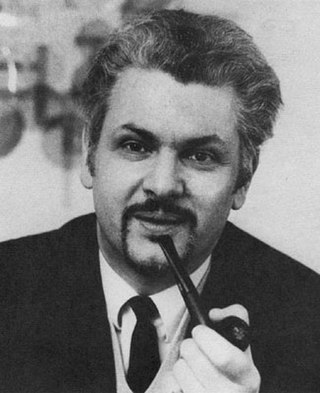Computer music is the application of computing technology in music composition, to help human composers create new music or to have computers independently create music, such as with algorithmic composition programs. It includes the theory and application of new and existing computer software technologies and basic aspects of music, such as sound synthesis, digital signal processing, sound design, sonic diffusion, acoustics, electrical engineering and psychoacoustics. The field of computer music can trace its roots back to the origins of electronic music, and the first experiments and innovations with electronic instruments at the turn of the 20th century.
Electronic music is a genre of music that employs electronic musical instruments, digital instruments, or circuitry-based music technology in its creation. It includes both music made using electronic and electromechanical means. Pure electronic instruments depended entirely on circuitry-based sound generation, for instance using devices such as an electronic oscillator, theremin, or synthesizer. Electromechanical instruments can have mechanical parts such as strings, hammers, and electric elements including magnetic pickups, power amplifiers and loudspeakers. Such electromechanical devices include the telharmonium, Hammond organ, electric piano and the electric guitar.
Sonology is a neologism used to describe the study of sound in a variety of disciplines.
Electroacoustic music is a genre of popular and Western art music in which composers use technology to manipulate the timbres of acoustic sounds, sometimes by using audio signal processing, such as reverb or harmonizing, on acoustical instruments. It originated around the middle of the 20th century, following the incorporation of electric sound production into compositional practice. The initial developments in electroacoustic music composition to fixed media during the 20th century are associated with the activities of the Groupe de recherches musicales at the ORTF in Paris, the home of musique concrète, the Studio for Electronic Music in Cologne, where the focus was on the composition of elektronische Musik, and the Columbia-Princeton Electronic Music Center in New York City, where tape music, electronic music, and computer music were all explored. Practical electronic music instruments began to appear in the early 20th century.
Gottfried Michael Koenig was a German-Dutch composer.
Konrad Boehmer was a German-Dutch composer, educator, and writer.

Poème électronique is an 8-minute piece of electronic music by composer Edgard Varèse, written for the Philips Pavilion at the 1958 Brussels World's Fair. The Philips corporation commissioned Le Corbusier to design the pavilion, which was intended as a showcase of their engineering progress. Le Corbusier came up with the title Poème électronique, saying he wanted to create a "poem in a bottle". Varèse composed the piece with the intention of creating a liberation between sounds and as a result uses noises not usually considered "musical" throughout the piece.

Tera de Marez Oyens was a Dutch composer.
Sergio Luque is a composer of vocal, instrumental and electroacoustic music. His work often involves computer-aided algorithmic composition and stochastic processes.
Makoto Shinohara is a Japanese composer.
John McGuire is an American composer, pianist, organist, and music editor.

The Philips Pavilion was a World's Fair pavilion designed for Expo '58 in Brussels by the office of Le Corbusier. Commissioned by electronics manufacturer Philips, the pavilion was designed to house a multimedia spectacle that celebrated postwar technological progress. Because Le Corbusier was busy with the planning of Chandigarh, much of the project management was assigned to Iannis Xenakis, who was also an experimental composer and was influenced in the design by his composition Metastaseis.

Jan Boerman was a Dutch composer who specialised in electronic music from 1959. He was born in The Hague. The Delft Polytechnic in Utrecht, from which the Institute of Sonology was developed, housed the first electronic music studio in the Netherlands after the Philips laboratory in Eindhoven, which was not generally open to composers.

Werner Kaegi is a Swiss electronic composer, musicologist and educator. During the 1960s, he promoted electronic music in his home country. In the 1970s, as a composer and researcher at Utrecht's Institute of Sonology, The Netherlands, he developed pioneering programs in the field of computer-generated music.
Jean Piché is a Canadian composer and video artist.
Nummer 5 met zuivere tonen is a musical work by the Belgian composer Karel Goeyvaerts, realized at the WDR Studio for Electronic Music in 1953 and one of the earliest pieces of electronic music.
Spatial music is composed music that intentionally exploits sound localization. Though present in Western music from biblical times in the form of the antiphon, as a component specific to new musical techniques the concept of spatial music was introduced as early as 1928 in Germany.

The Studio for Electronic Music of the West German Radio was a facility of the Westdeutscher Rundfunk (WDR) in Cologne. It was the first of its kind in the world, and its history reflects the development of electronic music in the second half of the twentieth century.
Scambi (Exchanges) is an electronic music composition by the Belgian composer Henri Pousseur, realized in 1957 at the Studio di fonologia musicale di Radio Milano.
Artikulation is an electronic composition by György Ligeti. Composed and notated in January and February 1958, the piece was prepared and recorded on magnetic tape from February to March with the assistance of Gottfried Michael Koenig and Karlheinz Stockhausen's assistant, Cornelius Cardew, at the Studio for Electronic Music of the West German Radio (WDR) in Cologne. The piece consists of various types of sounds, "in conditions of aggregation." It "can be heard as a conversation without words". Ligeti explains in notes to the listening score :
The piece is called 'Artikulation' because in this sense an artificial language is articulated: question and answer, high and low voices, polyglot speaking and interruptions, impulsive outbreaks and humor, charring and whispering.





